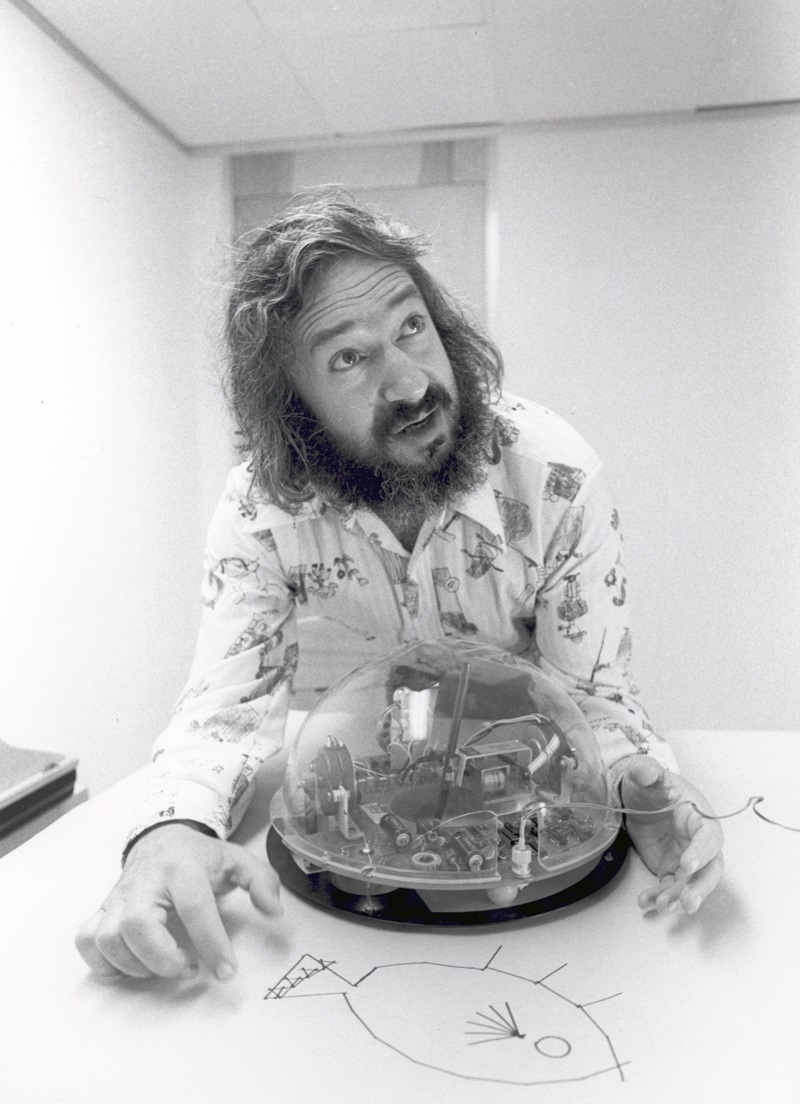Seymour Papert, a mathematician and education theory visionary, has had a huge impact on how children around the world learn. His educational philosophy of constructionist learning was part of a revolution in how we approach teaching. Like Jean Piaget, with whom he worked at the University of Geneva, Papert was not content with traditional ideas about learning. He believed that children were not empty vessels into which knowledge was imparted but active participants in constructing their own mental models. This idea was the beginning of a new and dynamic pedagogical approach which is now commonly employed in education worldwide. At Teach HQ, we believe that understanding the roots of our practices is crucial. So, let's take a closer look at Papert's vision and the impact of constructionist learning on modern education.
Papert's Early Life and Influences
Seymour Papert’s formative years were spent in Pretoria, South Africa. Growing up in apartheid-era SA meant that he witnessed firsthand the glaring inequalities and systemic barriers to education common not only in the country of his birth but in many other places around the globe. This early exposure created in him a lifelong passion for democratising learning, ensuring every child—regardless of their background—had a chance to explore, engage, and elevate themselves. As a young man, Papert was deeply intrigued by the mathematical elegance of Euclidean geometry; he often attributed this to the "clear, logical beauty" it represented. This affinity for mathematics led him to the University of Witwatersrand in Johannesburg, where he pursued a degree in the subject. A crucial point in Papert's intellectual journey was his encounter with the renowned Swiss psychologist, Jean Piaget, during his postgraduate studies in Switzerland. Piaget’s theories on child development deeply resonated with Papert. The two formed a bond. With Piaget's input, Papert's own ideas on child development and learning began to form. He considered a child to be not a passive recipient but an active constructor of knowledge. The journey of Papert's early life—the politics of apartheid, the logical allure of mathematics, and the groundbreaking insights from Piaget—shaped in him a vision that helped to transform the field of education.

Understanding Constructionist Learning
Constructionist learning is a building block of modern education. At its core, it posits a simple yet profound idea: knowledge is not merely acquired, it's built. Students are not passive recipients of information but active builders of their own cognitive structures. As Papert himself put it, “You can’t think about thinking without thinking about thinking about something.” Constructionism and constructivism are like they sound: similar but not quite identical in the world of learning theories. Both advocate for a learner-centric approach, emphasising the role of the learner as an active participant. However, there are nuances that set them apart. 1. Creation leads to comprehension While constructivism focuses on the internal construction of knowledge, constructionism asserts that learning is most effective when the learner is engaged in constructing an external artefact. This could be anything from a poem to a robot, a mathematical model, or even a sandcastle. 2. Technology as a catalyst Papert believed deeply in the power of modern technology, especially computers, to revolutionise the way kids learn. He saw them as ‘objects to think with’; tools that could provide a playground for the mind and an easel and brushes with which students could create understanding. 3. Learning in a context Constructionism posits that learning is most potent when it's contextually anchored. Whether it's mathematics in the realm of gaming or history in the plot of a compelling story, placing knowledge within a meaningful context makes it stick. Constructivist theories lay the groundwork by emphasising the active role of the learner in building their own understanding. Constructionism takes it a step further. It moves the action from the confines of the mind to the physical (or digital) world, with tangible creation as a pivotal part of the learning process.
LOGO: Papert's Brainchild
One of Papert’s significant works is the Logo programming language. This was an embodiment of his beliefs and his appreciation for technology—with Logo, he helped to create a digital playground where the principles of constructionist learning could come alive. At its inception, Logo was revolutionary. While many viewed computers solely as complex calculating machines, Papert and his colleagues saw the potential to transform the educational landscape. It was created not just as a coding language but as a medium for children to express ideas, solve problems, and, most importantly, learn through creation. Using a turtle graphic as a cursor, Logo allows users to draw lines with basic commands, learning about lengths and angles while creating patterns and images.
The LOGO Experience: More than Just Coding
1. The Turtle Metaphor Central to Logo was the turtle, a graphic representation that kids could command. It wasn't just about the end result; the process of instructing the turtle was where the real learning occurred. As students experimented, hypothesised, and iterated, they were actively constructing knowledge. 2. Bridging the abstract and the tangible Mathematical concepts, often perceived as abstract, became tangible with Logo. Students could visualise, manipulate, and understand complex ideas, from geometry to algebra all while having fun. 3. Empowerment through creation Logo was never about rote learning or mindless repetition. Instead, it was about creation. When using it, students weren’t just consumers of technology. They were creators, builders, and thinkers, empowered to shape their digital worlds. The impact of Logo extends beyond its time. It laid the groundwork for many educational technologies we see today and solidified the belief that computers could be useful partners in the learning journey.

Constructionism and Technology: Papert's Visionary Fusion
Seymour Papert didn't just observe the convergence of education and technology; he championed it. Long before digital literacy became a buzzword, Papert envisioned a world where children weren't just passive consumers of technology but active creators of it. While the world saw computers as mere tools for arithmetic or data processing, Papert recognised their potential as instruments for ideation, exploration, and creativity. He envisaged an environment where children could manipulate digital elements just as they would blocks in the physical world. It was a language of expression, a canvas for ideas, and a tool for storytelling. By introducing kids to programming, he was offering them a new way to represent and process their understanding of the world. Papert's constructionist approach emphasised 'making' as a form of learning. In the digital realm, this translated to children creating games, simulations, and digital art. As creators they grappled with problems, tested solutions, and deepened their understanding intuitively. Papert’s integration of learning with technology was nothing short of revolutionary. He shifted the narrative from technology being an 'add-on' in education to it being part of the learning process.
Debates and Discussions
Every ground-breaking idea attracts both acclaim and critique. Seymour Papert's constructionist learning theory, despite its influence, hasn't been immune to criticism. And as with any theory getting on in age, it can be adapted and improved with new research.
The Logo Controversy
Despite the wholesome idea behind the Logo, it faced critique. Some educators believed it overly emphasised the programming aspect, possibly overshadowing broader educational objectives.
Too Open-Ended?
A prominent counter-argument stems from the idea that constructionism might be too unstructured for some learners. Critics argue that without clear direction, students might feel overwhelmed or aimless.
The Digital Divide
Papert championed tech-integrated learning, and this inadvertently spotlighted the issue of digital equity. Not all students have equal access to technology, raising concerns about inclusivity.
The Evergreen Relevance
Despite critiques, it's undeniable that the essence of constructionism—learning by doing—remains relevant. Education continues to evolve, and so does the application of Papert's theories. It has found its place in blended learning, flipped classrooms, and other innovative pedagogies. Debate leads to growth! Understanding, addressing, and learning from critiques allows the educational community to ensure that constructionism and other theories remain relevant and helpful today.
Papert and EdTech: A Symbiotic Relationship
Unsurprisingly, Seymour Papert's theory has done well with the rise of educational technology (EdTech). If he were alive to see it, there’s little doubt he would have enjoyed the possibilities opened up to learners by these tools.
A Pioneer's Vision
Before the digital education revolution, Papert saw a future where computers would play an important role in learning. His foresight made him a trailblazer, laying the foundation for integrating technology into education.
Logo: More than Just a Language
The creation of the Logo programming language wasn't merely about coding. It was Papert’s (and the team’s) way of enabling students to 'think about thinking', to visualise and control their ideas tangibly. This marked one of the earliest instances of technology being used as a cognitive partner.
EdTech's Evolution: A Papert Imprint
As EdTech evolves, Papert's principles remain relevant. From interactive software that facilitates 'learning by doing' to platforms that encourage collaborative problem-solving, Papert's philosophy makes itself known in new technologies and platforms. Today's cutting-edge learning platforms, whether they be game-based learning environments or virtual simulation labs, resonate with Papert's ideas. They provide spaces for students to construct, experiment, fail, and iterate—pillars of constructionist learning.
In Summary
Seymour Papert was a man with some very influential ideas! He believed in students as active contributors to (and builders of) their own learning, and this helped to reshape how educators perceive the teaching and learning process. The theory of constructionist learning can adapt and thrive with the changing times. Today, at the crossroads of technology and pedagogy, Papert’s ideologies can guide educators. The Logo programming language helped to demonstrate the transformative power of blending creativity with computation. For more information about learning and development theories and a range of other important topics for teachers, take a look at our range of CPD courses for educators in the UK.
Further reading and resources
- Mindstorms: Children, Computers, and Powerful Ideas by Seymour Papert - Outlining Papert's revolutionary ideas on how children can use computers to amplify their innate ability to learn and explore.
- The Children's Machine: Rethinking School in the Age of the Computer by Seymour Papert - A continuation of his earlier work, diving deeper into how technology can be harnessed for more effective student-centred learning.
- Harnessing the Benefits of Technology in Education, a resource by Teach HQ.
- Education Theories for Teachers and Leaders, a resource by Teach HQ.
- Navigating the Future: Top CPD Courses for Teachers in 2024, a resource by Teach HQ.

